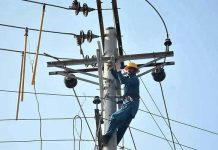ISLAMABAD: The multibillion-dollar China-Pakistan Economic Corridor (CPEC) has opened up a new chapter of innovations in the field of science and technology in Pakistan, contributing to its economic stability and leaving a healthy impact on the people’s lives. WealthPK’s report covers the agreements, collaborative research efforts, advancements in renewable energy technology, the role of technology parks in bringing innovation, progress in biotechnology, ICT, space technology, healthcare and agricultural technology to showcase the successes of the Pak-China partnership and provide insights into the potential opportunities for future collaboration in the field.
Given the overview of CPEC and its role in the science and technology sector in Pakistan, China has funded the development of a cutting-edge science and technology park in Islamabad with the intention of providing a venue for cooperation between Pakistani and Chinese scientists and entrepreneurs.
Pak-China agreement in science and technology
An agreement was signed in 2017 to strengthen bilateral cooperation in science and technology.
The China-Pakistan Science and Technology Cooperation Centre was established in Beijing to facilitate the Chinese technology companies to conduct business in Pakistan.
Chinese company Shenyang Economic and Technological Development Area (Seda) and the Special Technology Zones Authority (STZA) of Pakistan have signed a Letter of Intent (LOI) to boost cooperation in the technology sector. Seda is the largest hi-tech manufacturing facility that will assist the STZA in the areas of innovation, entrepreneurship, human capital development and digital economy through the integration of science, technology and economy. Owing to the rapid growth, Pakistan’s technology sector now offers globally competitive opportunities for Chinese partners and investors.
Enhancing collaborative research efforts in science and technology
In its efforts to boost the science and technology sector in Pakistan, China is offering scholarships and training opportunities to Pakistani students and researchers to assist them in gaining knowledge in different scientific and technological disciplines.
Construction of the China-Pakistan Joint Research Centre, which intends to conduct research on geological disasters, water resources, climate change, and other relevant topics, is one of the key aspects of this partnership.
Moreover, the creation of universities and research organisations in Pakistan, such as the China-Pakistan Joint Research Centre on Biotechnology, which focuses on research in the fields of genetics, biomedicine, and agricultural biotechnology, has also been funded by China under the CPEC.
Creating Special Economic Zones (SEZs) has expanded Pakistan’s research and technology sector. The SEZs hope to attract foreign investment and technology transfer, which can aid in advancing information technology, biotechnology, and nanotechnology research and development. They have also created fresh possibilities for innovation, research, and development.
Progress in renewable energy technology in Pakistan
As a result of the Chinese government’s active involvement in determining the focus areas, Pakistan has made significant progress in the fields of artificial intelligence, telecommunications, robotics, electric vehicles, and renewable energy.
In addition, China has been funding a number of energy-related projects in Pakistan as part of the CPEC agreement, including the development of coal-fired power plants and renewable energy initiatives such as wind and solar energy. These initiatives are anticipated to support the advancement of renewable energy technology in addition to addressing the country’s expanding energy needs.
Role of science and technology parks in promoting innovation
A modern science and technology park being built in Islamabad with the Chinese support will serve as a platform for cooperation between the Chinese and Pakistani scientists and businesses. By offering cutting-edge infrastructure and facilities for research and development operations, the building of industrial parks under the CPEC is also boosting technological innovation.
The Pak-China Science, Technology, Commerce and Logistic Park is built close to Islamabad at the estimated cost of $1.5 billion.
The Xinjiang Production and Construction Corps of China is using 500 hectares for the park, and all the funding is coming from China.
Recently, the first-ever China-Pakistan Technology Investment Conference was organised jointly by the Special Technology Zone Authority (STZA), Pakistan Embassy China, Ministry of Foreign Affairs, Islamabad and Zhongguancun Belt and Road Industrial Promotion Association (ZBRA). More than 4500 technology representatives from technology parks, high-tech production enterprises, technology companies, investment companies, R&D companies and Chines state-owned infrastructure companies participated.
The aim of the conference was to create linkages and cooperation in the field of technology by working together in R&D, especially in emerging technologies such as artificial intelligence, cloud and quantum computing.
Progress in biotechnology
The creation of universities and research organisations in Pakistan, such as the China-Pakistan Joint Research Centre on Biotechnology, which focuses on research in the fields of genetics, biomedicine, and agricultural biotechnology, has also been funded by China under the CPEC.
A memorandum of understanding (MOU) has been signed between the two countries on constructing a joint cotton biotech laboratory.
Collaboration in information and communication technology
Pakistan’s telecommunication infrastructure has improved significantly, with China playing a major role in the development of 3G, 4G, and 5G networks. The fibre-optic cable project, connecting China and Pakistan, has also enhanced internet connectivity and facilitated digital advancements in the country.
The $820 million Pakistan-China Fibre Optic Project will improve communication in Gilgit-Baltistan region and give Pakistan a fifth route to carry telecommunication traffic.
Space and satellite collaboration
Cooperation in space technology expanded recently as part of the CPEC agreement. China has supported Pakistan in the development of remote sensing satellite (PRSS-1) and communication satellite (PakSat-MM1), allowing it to enhance its capabilities in space technology and applications.
In terms of satellite monitoring of natural disasters and agricultural production, land and resource surveying, and waste treatment in a microgravity setting, the space collaboration will benefit Pakistan.
Pakistan has enhanced its remote sensing, communication, and navigation systems because of this technology transfer, which has also encouraged cooperation in space exploration and research.
Health and medical research
Both countries have been working together to produce vaccines and therapies for numerous ailments. The China-Pakistan Joint Health and Medical Research Centre was established to foster scholarly collaboration in infectious illnesses, conventional medicine, and public health.
Progress in agriculture and water management
Collaborative research labs and centres like the Pak-China Agriculture Joint Research Centre have aided in the transfer of cutting-edge agricultural and water management technologies. Through improved crop yields, the development of climate-resistant plants, and improved water resource management, Pakistan has increased food security and promoted sustainable development.
Addressing challenges in science and technology
Relying on the higher education resources to conduct, design and R&D activities is not enough and communication and collaboration among the educational and research institutions should be strengthened in the technology transfer.
There is also the issue of capacity, which could be a significant obstacle during the implementation phase unless it is swiftly resolved by recruiting and training a large technical and qualified workforce required for this business venture.
The National University of Technology and Skills Development (NUTECH) was conceived to remedy this. The proposed institution would be the first in Pakistan to provide education from basic to higher education.
Future outlook and potential opportunities for cooperation in science and technology
The CPEC has opened up many opportunities for joint collaboration in the field of science and technology.
As both countries continue to recognise the importance of science and technology in achieving sustainable economic development, the future opportunities for collaboration in this area are vast. Here are some potential opportunities for collaboration.
Artificial Intelligence (AI) and machine learning: There is a lot of room for cooperation in the area, given the swift advancement of AI and machine learning. While Pakistan is home to an increasing number of talented software engineers, China has become the world leader in the field that may be advantageous for both nations to collaborate in AI research and development projects in areas including computer vision, natural language processing, and intelligent robotics.
Digital health: The importance of digital health technology, including telemedicine, remote patient monitoring, and digital health records, has been brought to light by the COVID-19 pandemic. To enhance healthcare delivery, broaden access to medical services, and lower healthcare costs, both countries might work together on developing and implementing digital health technology.
Clean energy technologies: China and Pakistan both have set challenging goals to shift to the clean energy. To meet these goals and combat climate change, cooperation in the development and application of clean energy technologies, such as energy storage systems, renewable energy grids, and smart grid technologies, may be helpful.
Nanotechnology: Electronics, energy, and medical fields are just a few of the industries that nanotechnology has the potential to revolutionise. In the creation of nanomaterials, nanosensors, and nanoelectronics as well as their applications in numerous industries, China and Pakistan may work together.
Biotechnology: As a rapidly expanding discipline, biotechnology has numerous uses in industry, medicine, and agriculture. China is the global leader in biotechnology though Pakistan has considerable promise in this area. Collaboration on cooperative research and development initiatives in fields like gene editing, biosensors, and biofuels may result in important discoveries and win-win outcomes.
Quantum computing: Numerous industries, including artificial intelligence, materials science, and cryptography, stand to benefit from quantum computing.
While Pakistan is home to an increasing number of gifted physicists and mathematicians, China has made significant investments in the study of quantum computing. Joint efforts in the study and development of quantum computing could result in substantial improvements and mutual advantages. –INP





